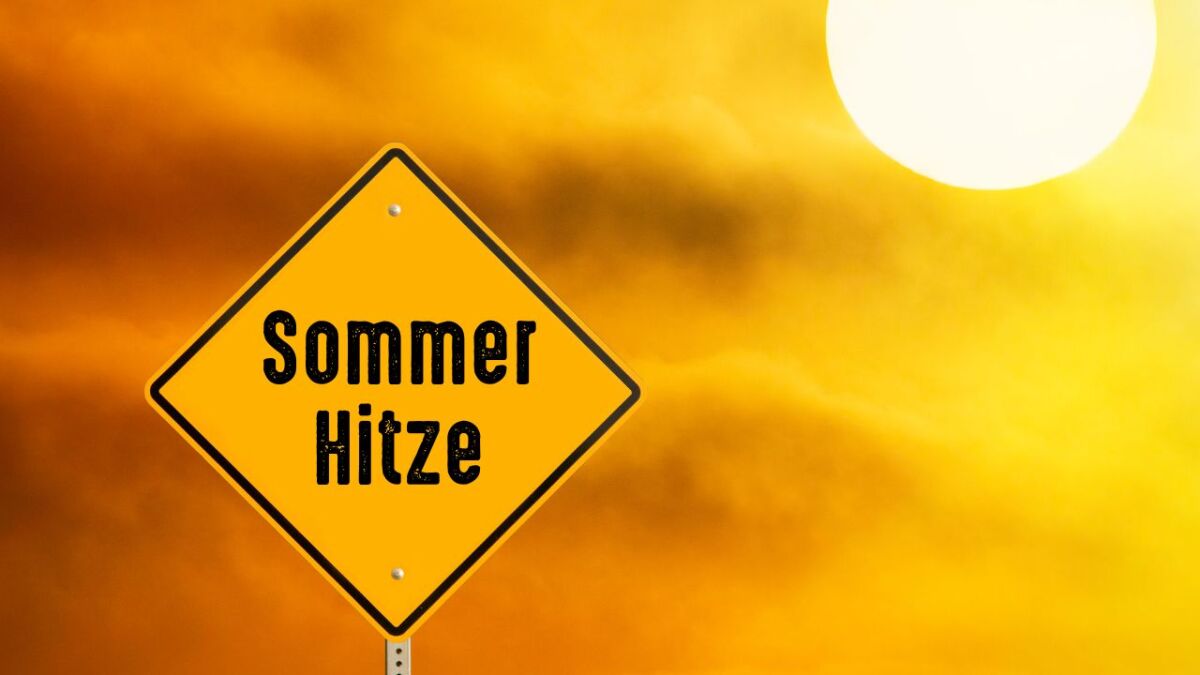
Survival in summer: Surviving extreme heat without air conditioning (+tips for the desert)
👉 The key facts from this guide
- During extreme heat, it is important to provide shade for the apartment or house and insulate the windows to lower the indoor temperature.
- Evaporative cooling can be used for both the body and the home to lower the temperature.
- In extreme heat conditions, such as in the desert, it's significant to seek shade during midday sun and cover the skin as much as possible.
- Fluid intake must always be ensured to prevent dehydration.
- It is advisable to be active at night to avoid the heat of the day.
- If a safe place with access to water is found, it should not be left carelessly.
I strongly assume that you have already experienced an extremely hot summer, where temperatures sometimes rose up to 40 degrees Celsius.
Surviving everyday life in such heat is hard enough. If your beloved air conditioning or fan fails, it can become critical.
You have probably heard of heat-related deaths in some summers. Of course, it makes a difference where you are and under what circumstances or scenarios you experience the heat.
The purpose of this blog is to best prepare you for various extreme situations or to provide support for self-help.
To achieve this, this guide will consider surviving extreme heat in its entirety. This means both during everyday life and in the outback, desert, or other very hot regions.
Over the next sections, you will learn what is necessary to survive extreme heat - no matter where and in what scenario you find yourself.
Surviving Extreme Heat During Everyday Life
Before we put you in a merciless desert or barren land, let's start with the standard situation that will surely affect you in the near future.
You're in your apartment or house and don't have air conditioning available, while the outside temperature may be around 40 degrees Celsius.
Depending on your current living situation, you may be able to implement some things, while others may be impossible. Like with other articles on this blog, try to filter out and take with you what seems useful and helpful for you.
The Condition of Your House
Something you only have limited influence on is the position of your house or apartment.
If your house is exposed to the full sun without any external protection, it will naturally heat up throughout the day. The same goes for attic apartments. In this case, there is little you can do to prevent it from happening.
If you own a house, you can provide some shade by planting trees. Alternatively, you can install special heat protection films on your windows.
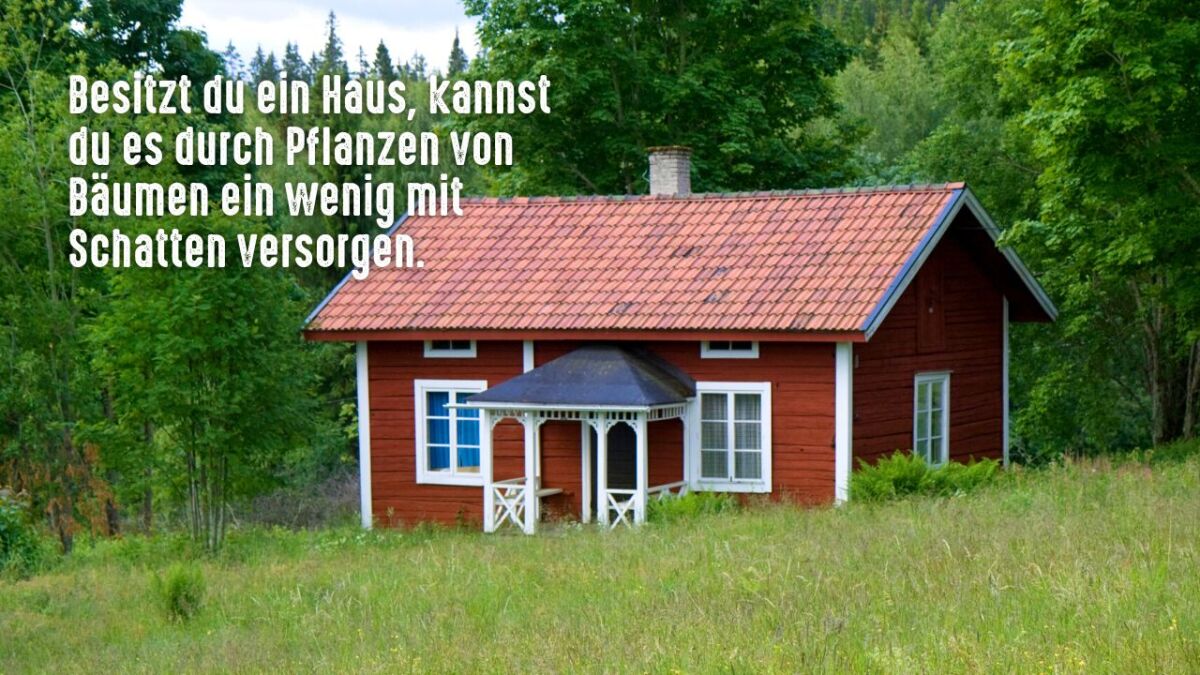
Close the Shutters!
If it's scorching hot outside, you should definitely try to shade your apartment or house from the sun.
Close the blinds or shutters, so that the direct sunlight no longer enters the room.
If you do it in time, before the sun begins to cook your interiors, it could make a difference of up to 10 degrees Celsius!
Nevertheless, you should still leave a small gap, so the blinds or shutters should not be fully closed. This allows some fresh air into your living space.
Yes, the air will most likely not be cool, but this measure serves a necessary purpose.
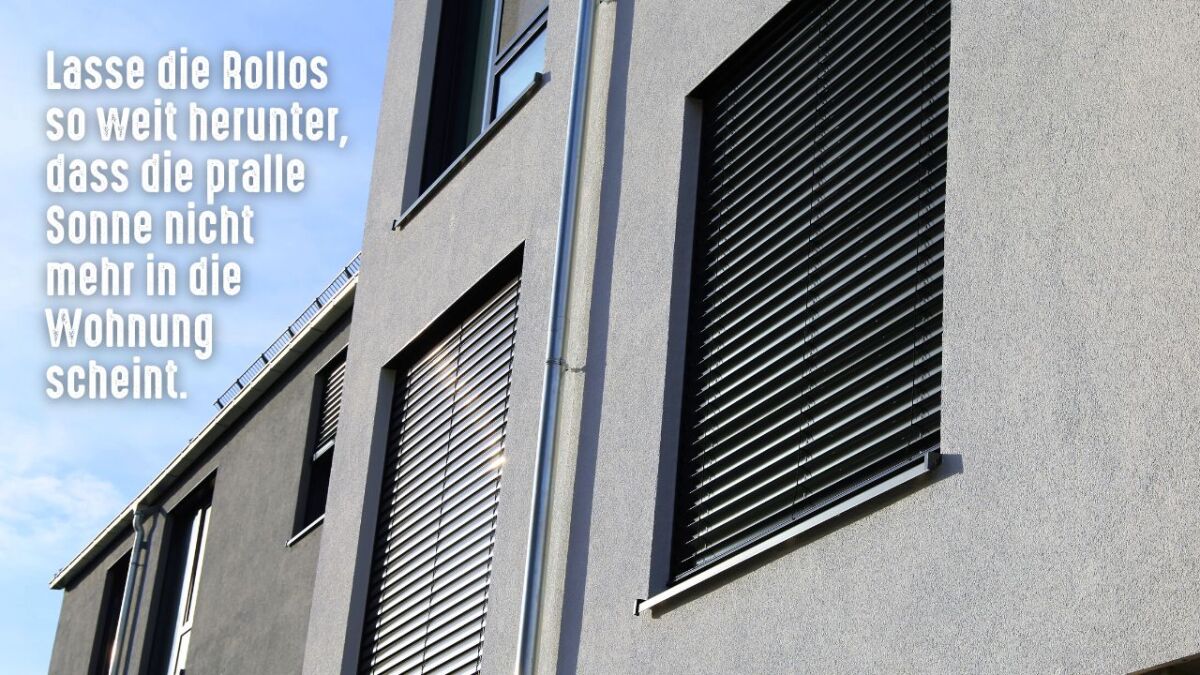
If your apartment or house is hot, you will inevitably start to sweat. The humidity rises, making you sweat even more, and causing you to lose many fluids.
Aside from that, it will eventually become uncomfortable if the humidity remains permanently high, making you feel like you're in a sauna, or like Tarzan in the jungle.
You want to survive the extreme heat not only comfortably, but also without any inconvenience.
Ventilation, Wind, and Evaporative Cooling
If it's particularly hot, a bit of wind can work wonders. So if it's not just warm outside, but there's a noticeable wind, make sure to properly ventilate your home!
Even if this wind may not be as cool as you'd like, it will feel pleasant and strengthen another factor: evaporation.
When liquid evaporates, it absorbs heat and eventually evaporates. You surely know how pleasant it feels when a cool breeze of wind hits your sweat-covered skin.
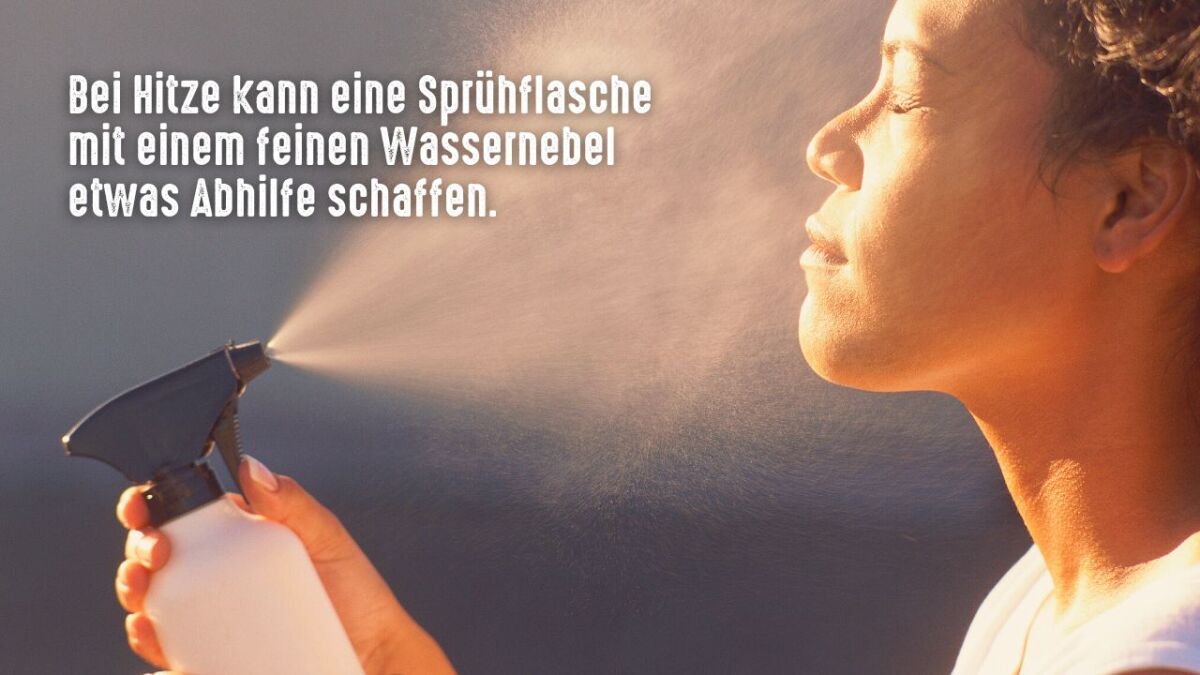
You can optimize this effect by taking a spray bottle and moistening your skin with water.
This way, evaporation cooling provides you with a pleasant coolness and the water absorbs the heat in your body.
Evaporation cooling for your apartment
Not only can your body benefit from evaporation cooling, but your entire apartment can as well. As with shade, the same applies here: If you do it cleverly, you can lower the temperature inside your four walls by 5 to 10 degrees Celsius.
All you need for this is a cloth, water, and something to hang the cloth on.
Regularly moisten the cloth and hang it on a drying rack, door, or window.
The cloth should be relatively large so that the evaporation effect achieves the desired cooling effect. The evaporation of the water cools the room air, and even over a large area.
However, you must make sure that the humidity in the room being used does not become too high. If it is too humid in the corresponding room, you should open the windows completely once.
Head to the basement!
If you can't stand it anymore inside your apartment or on the upper floors of your house, there is still an alternative: get down to the basement!
If you have the possibility to go further down, for example to the basement or first floor, then do so. It's much cooler further down than upstairs.
If you have your property with a usable excavation or an earth cellar, you can of course also use those.
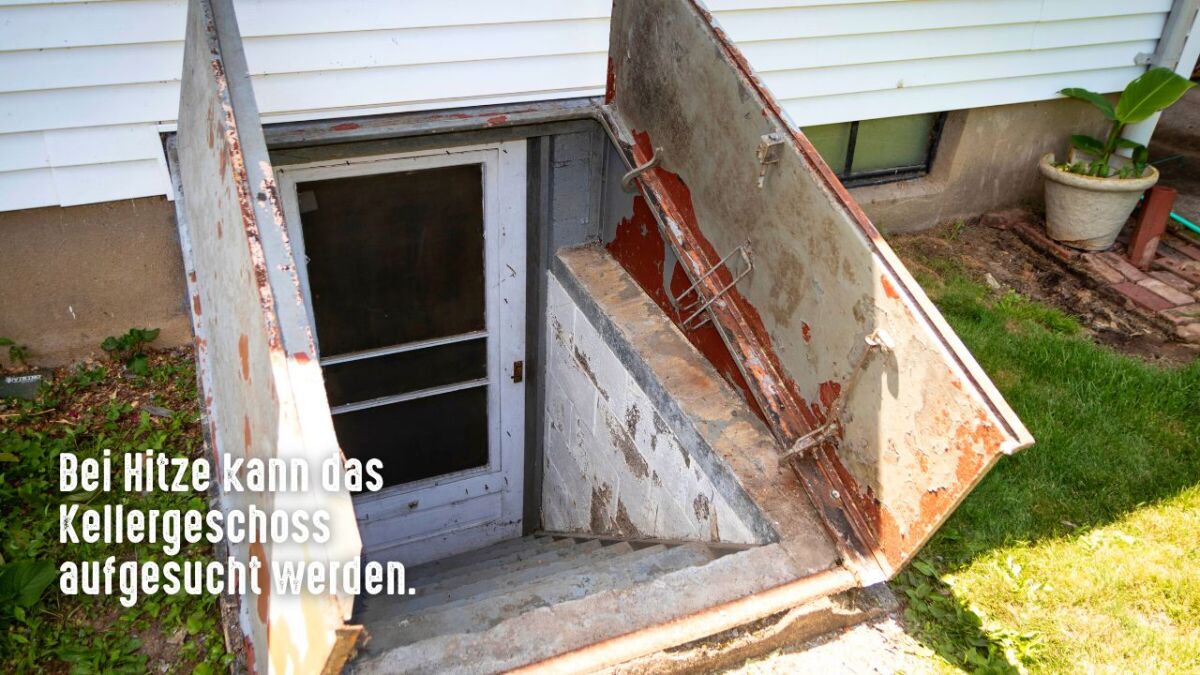
Go Swimming!
You can interpret this literally or figuratively.
If possible, use a pool, a lake, or the local swimming pool to cool off. As long as you don't step into a hot tub, the water will always be cooler than the outside air.
If you don't have the opportunity to cool off while swimming, you can also use the pared-down method: get a spray bottle and wet your skin with cool water!
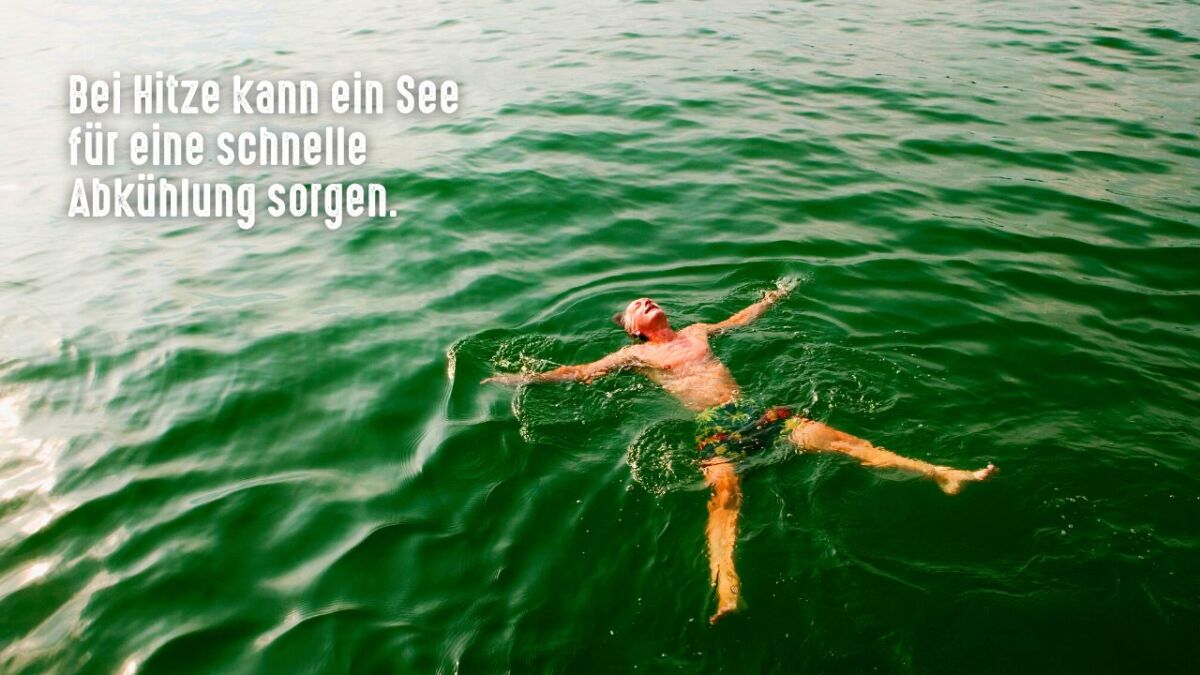
Surviving Extreme Heat in the Outback or Desert
Surviving extreme heat in your home or everyday life is difficult enough.
But what about in an emergency, where you find yourself in the wilderness, possibly even in the outback or a desert region?
There are immediate measures that are similar to combating heat in everyday life, but you should also consider other important things.
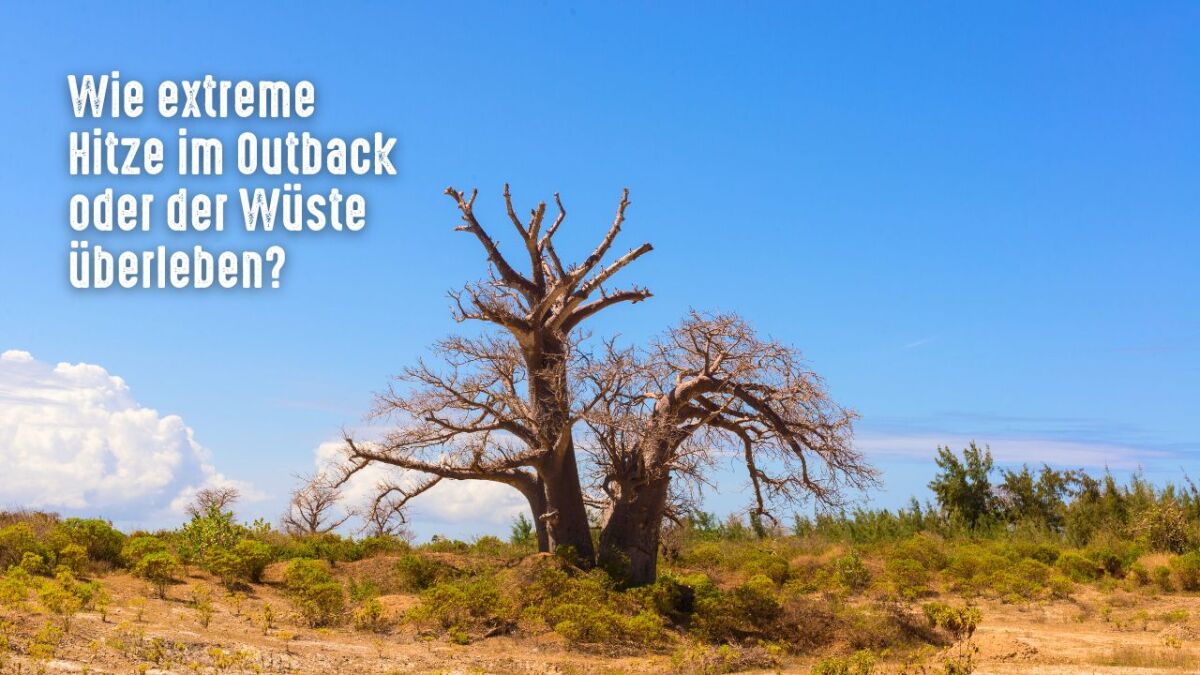
Watch the midday sun
Especially if you find yourself in a desert region, you should definitely avoid being on the road during the blazing midday sun.
If possible, find a shady spot and stay there until the sun has passed its zenith. Furthermore, make sure to cover as many skin areas as possible, ideally with relatively loose and long clothing.
If you are temporarily exposed to the midday sun, it can cause a heat build-up in your body. First, you will lose your orientation until you eventually die from the heat. Not very pleasant prospects, right?
So, always offer the sun as little attack surface as possible. Whether you do this with clothing, other objects or natural sun protection, it doesn't matter much. Use what is currently available to you because it's about your survival and time is not on your side!
Also read
Why do people wear so much clothing in the desert? - And why you should wear it too when it's hot - In the desert, the population wears long black robes, mostly made of thick fabrics. Why don't they wear a T-shirt and instead wear black clothing?
Ensure adequate fluid intake
If you are in extreme heat, fluid intake must always be ensured.

So if you're currently hiking through the desert or in above-average hot regions, neglecting this principle can have fatal consequences for you.
No matter what you do, your body consumes fluids.
During extreme heat, you will sweat, which cannot be avoided. Heavy sweating leads to an increased loss of fluid and minerals. Both of which should be balanced at all times.
Therefore, if you are aware that you will be in such an area, always carry enough water with you and otherwise find other ways to access water.
One option is to dig for water or search for classic oases.
However, you should be realistic: being unprepared in such a region, regardless of what the scenario is, is pure suicide.
So make sure in advance that your water supply is guaranteed.
Read also
Finding, Collecting, Filtering and Making Drinking Water – The Ultimate Water Guide – Finding water is one of the most important survival skills. In the article, you will learn everything about this precious resource: how to find it, collect it, and filter it.
Prefer Night Activity
If you find yourself in the middle of a survival situation and have to move through desert areas or the outback, you should mainly do it at night.
During the day, it is simply too hot, with the danger of dehydration or overheating being too great and the energy consumption being too high.
Therefore, find a sheltered place to stay during the day and endure the extreme heat of the day.
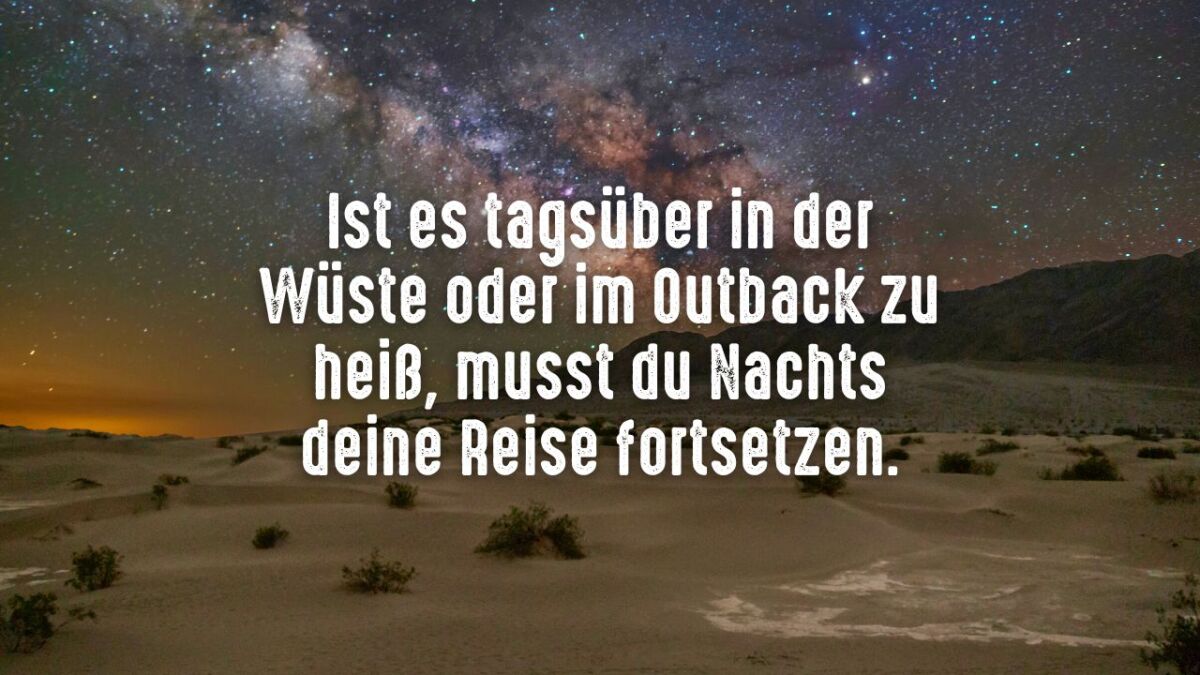
Rest, sleep, or attend to things that don't require much movement from you.
Once the day is over and the sun is setting on the horizon, you can either continue your journey or search for food and water.
As a rule, the brutal midday heat is not suitable for hiking. So, it's better to avoid it if there are other options available to you.
Only leave a safe place if necessary
If you have found a place in the desert where you can stay for a while, you should think twice before leaving it.
Especially if you have discovered water by digging - which (hopefully) will provide you with a temporary supply.
You know how difficult it is to find a worthwhile water supply in the desert. So, if that happens, you should consider staying there, at least for a while.
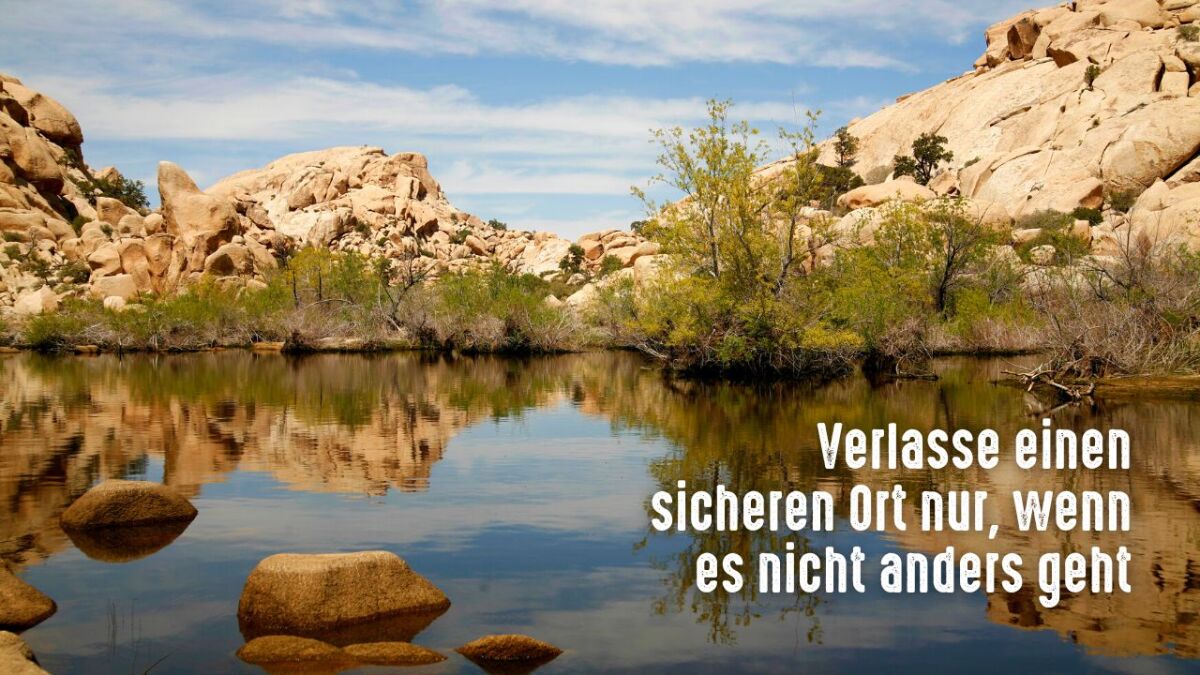
Of course, everything depends on your intentions. If you want to reach a certain place and have to cross the desert, you can rest and regain your strength there.
If you would like to attract attention and hope someone will find you, you should stay at your protected water source and try to get supplies while making yourself seen.
You can do this mainly through a campfire, which can serve as a smoke signal during the day and a source of warmth at night.
Read also
Making Fire Without Lighter or Matches (18 Ways) - Learn now with my 18 ways how to start a fire even without a lighter or matches.
Conclusion: Overheating and dehydration are always your number one enemies in extreme heat
All the tips I can give you for surviving in extreme heat always come down to preventing dehydration and overheating.
Whether it's wearing loose clothing, seeking shade, or staying hydrated - pay special attention to these aspects.
Obviously, surviving extreme heat in your home is much easier and less risky than in a survival situation in the desert or the Outback. Nevertheless, the same principles apply.
It's important to listen to your body during a heatwave.
You'll feel it when your body needs fluids or when you've spent too much time in the sun.
Despite this guide, don't try to make it a science.
Listen to your instincts, learn to understand your body, and act accordingly.


Author of the guide
Martin Gebhardt
Hey, I'm Martin. On my blog, you will learn the basics and numerous details about living in the wild. I think survival, bushcraft and the good life in nature are the keys to happiness. Find me here on Instagram or on YouTube. You can find more about my mission on the About Me page.
Was this guide helpful?
21 people found this guide helpful.
5.00 out of 5 points (21 Ratings)
Comments (0)
This post may contain affiliate links. So if you click on the links and make a purchase, I will receive a small commission at no additional cost to you. Click here, to learn more about it.


